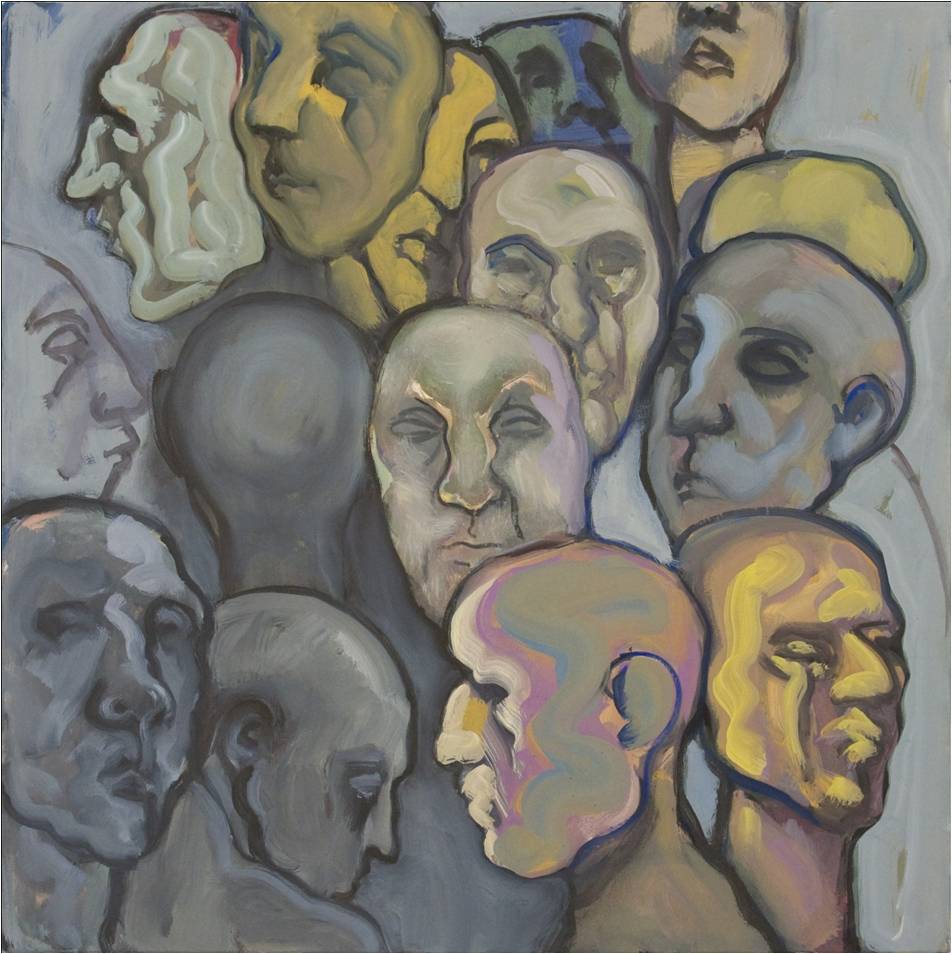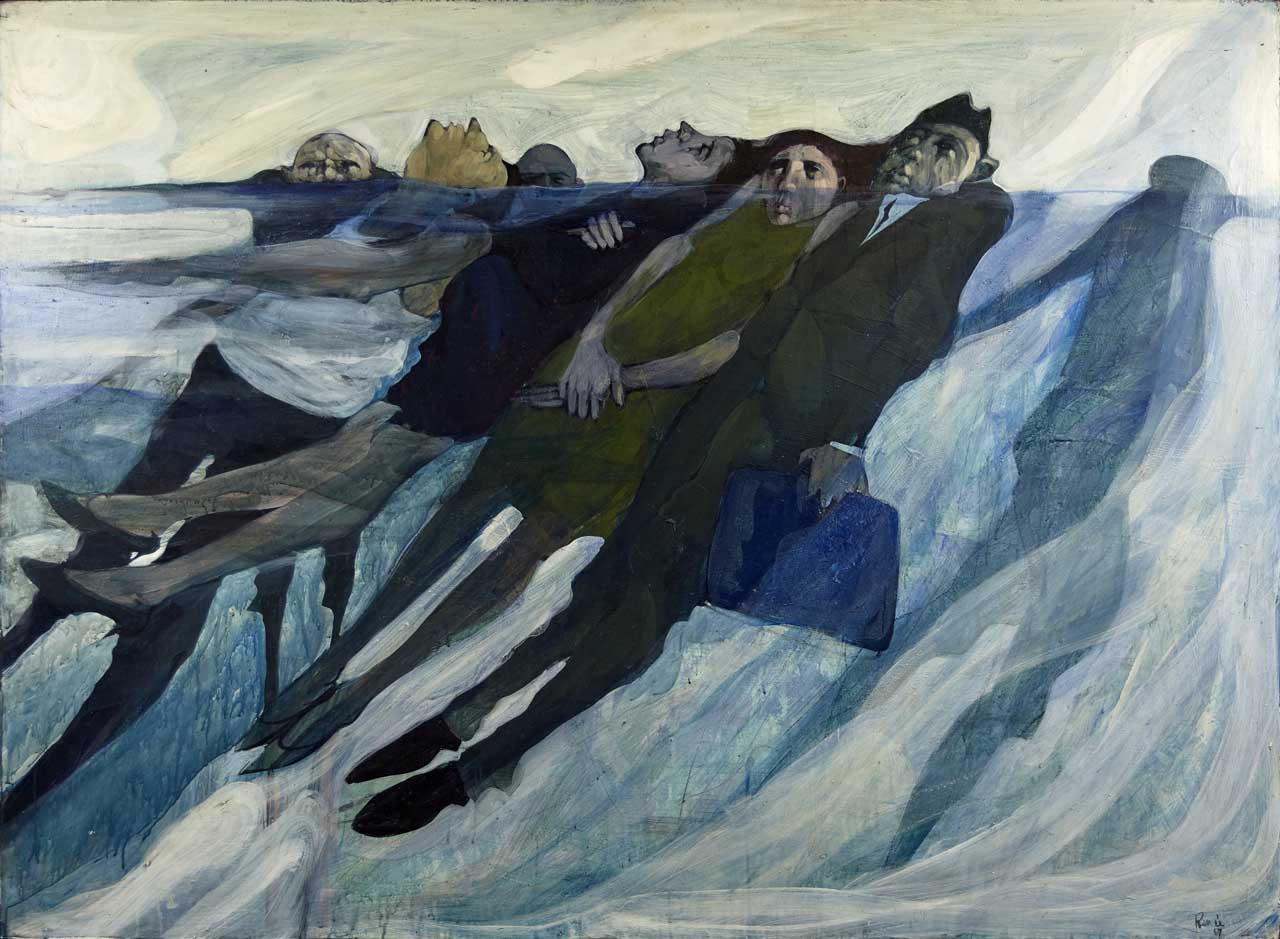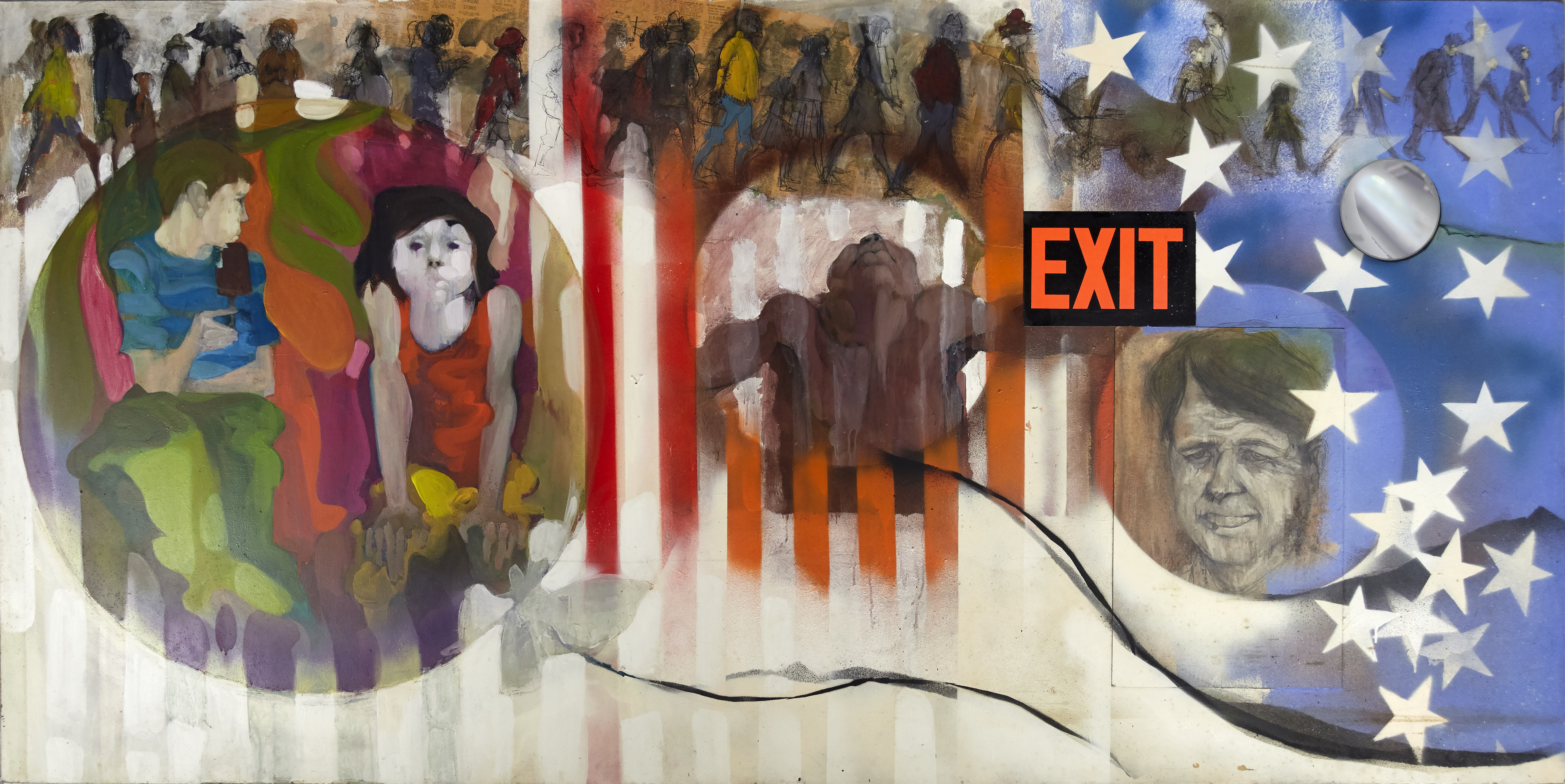REVIEWS
Art reviews provide insight into the strength of Renee Radell’s contention for a place in the canons of significant American woman contemporary painters.
Reviews and critical acclaim have followed the career of Renee Radell for over 60 years. Her painting technique, Post-War and Contemporary paintings, and mixed media contemporary art have never failed to strike a favorable cord among art critics. Press coverage of art shows and painting critiques has ranged from local art commentators, to mainstream art critique by seasoned art industry gatekeepers and fine art influencers. In the academe, erudite essas and analysis from art history and intellectual history scholars delve deeply into the meaning of her social commentary statements.
Renee Radell’s drawings first appeared in the Detroit News about the looming World War II. Detroit Institute of Arts Director and co-founder of the Archives of American Art, Edgar P. Richardson, was an early enthusiastic supporter of young painter Renee Radell. Not only did he purchase one of her paintings for the permanent collection of DIA, but he wrote the catalog forward for her first one person oil painting art show in 1959.
1960s Critical Acclaim
At the time she appeared in mainstream New York City gallery exhibitions in the 1960s, the name Renee Radell was somewhat of a sensation.






